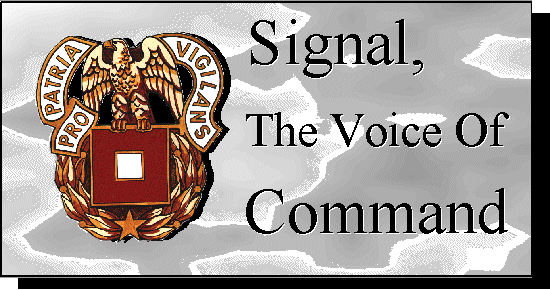
Click to go to US Army Signal Corps page
Military phones
Hello!
I'm a phone collector who was once in the
U.S.Army Signal Corps.
I got to use everything from a switchboard
that had to have been in use during the Korean war [remember tip and ring?],
to modern computerized commo equipment housed on the back of trucks [repair
consisted of whole circuit boards that you removed instead of replacing
a bad diode] and equipment that you strapped to your back.
It was quite an education and definitely aided
in fitness [hauling those reels of cable up the side of mountains on field
exercises didn't hurt either!].
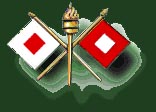
Dwelling on this made me think that we
needed a site featuring the phones of the American Military. Here
I've included a few pictures of phones I've seen, have in my collection
or that others have in their collections. Where I've found info it's
been included with the picture. A few great people have contributed
info.
As you can see I haven't gotten pictures or
info on all the phones that have seen service, nor is my list complete,
but we're adding to it all the time.
Do you have a picture of a phone in your collection
or info about how these were used? If you'd like to add to the page,
you can e-mail me at the address below. I'd love to hear from you!
Wind 'em up!
Phonelady

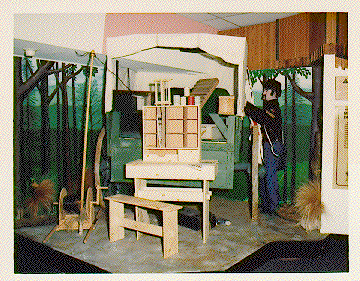
We've come a long way in military
communications. Did you know the first time commo was organized for
use in combat was during the Civil War. We started out with flags
and torches.
It's come a long way hasn't it!
{Click the picture above to find
out more}
The US did go through a series of
telephones going from the 1918 Service Buzzer in a leather case to the
EE 3 Field telephone in a wooden case to the EE 5 Field Telephone in a
leather case and then to the EE 8 telephone. By the start of WW II, the
EE 8 in a leather case was standard issue. Early experience in the Pacific
showed that leather did not hold up well and the EE 8 was then put in a
canvas case. excerpt from Army Radio Sales page www.armyradio.com

Here's a few goodies sent
in by Rob-our Sumterphone specialist
Many thanks Rob!
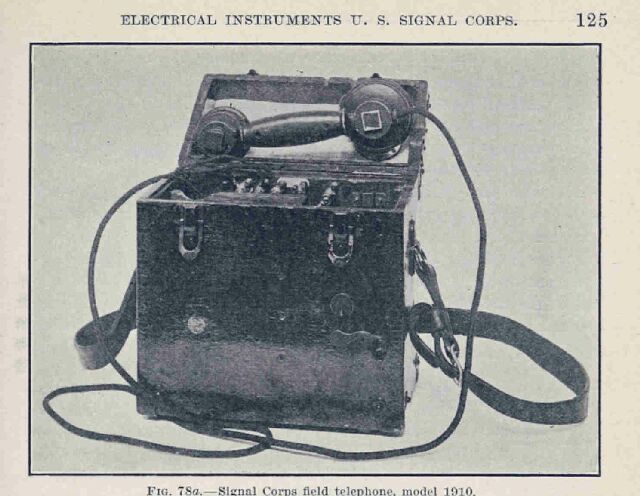
Carla,
Take a look at these.
They are out of a 1910 signal corps manual.
The field phone is only identified as a artillery
field phone, I believe,
don't know brand, not Sumter.
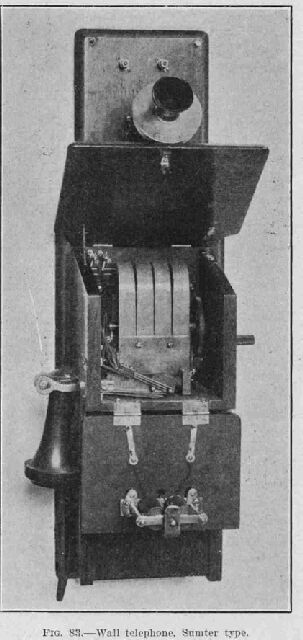 The fiddleback is a Sumter and is a little
The fiddleback is a Sumter and is a little
different than the commercial models that
I have or have seen. This does
not have the lightning arrestor like the commercial
models and it has a
Signal Corps marked name tag.
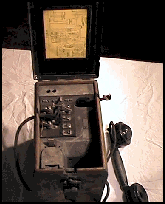
CAMP TELEPHONE MODEL A. This was a redesign
to use only one BA-1 battery of the EE-3B, which was converted after WWI
from the EE-3 which contained a buzzer for morse signaling over connections
too poor for voice use. Unfortunately the Germans discovered how to pickup
the electromagnetic waves and/or earth currents at quite a distance from
such wired devices and rendered their use unknowingly insecure. This
didn't dissuade the British from continuing to use Fuller Phones (U.S.
equivalent model EE-1) during W.W.II. I've seen photos of the devices
the Germans used to "listen-in" but so far know of no one who has preserved
such a device.
Marshall
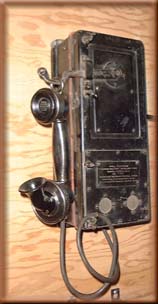 1917 Leich made W.W.I artillery
phone
[picture donated by Mike Brueckmann]
If you'd like to see the wiring
diagram for this phone click the picture.
1917 Leich made W.W.I artillery
phone
[picture donated by Mike Brueckmann]
If you'd like to see the wiring
diagram for this phone click the picture.

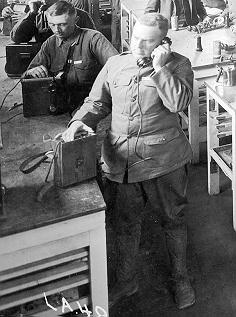 EE5
in use.
EE5
in use.
W.W.II
telephone equipment page
Canadian
Field phone
German,
Hungarian and Japanese field phones
Unknown
Field phone...

TA43/PT, Western Electric predecessor
to the TP312
[picture donated by Mike Brueckmann]
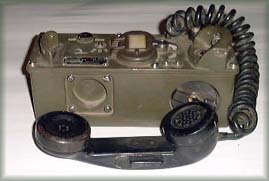
More
contemporary military telephone equipment

Questions
LINKS
to other Military Phone sites
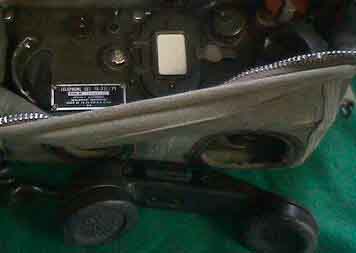
Leave a message!
Back
to Telephone collecting




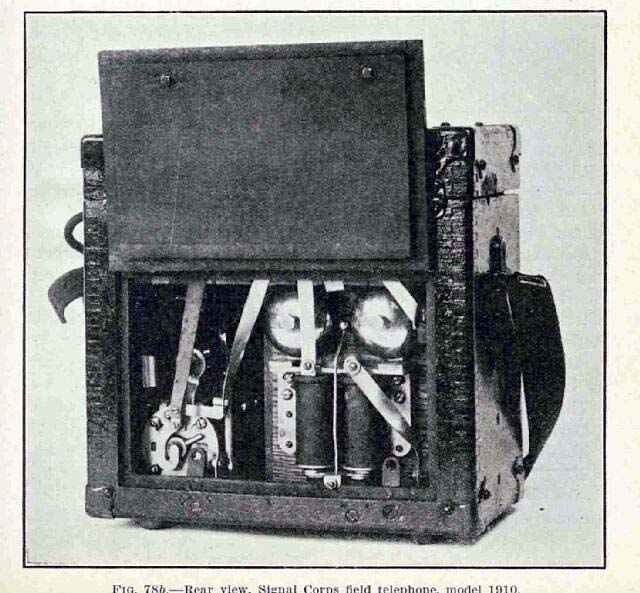
 The fiddleback is a Sumter and is a little
The fiddleback is a Sumter and is a little
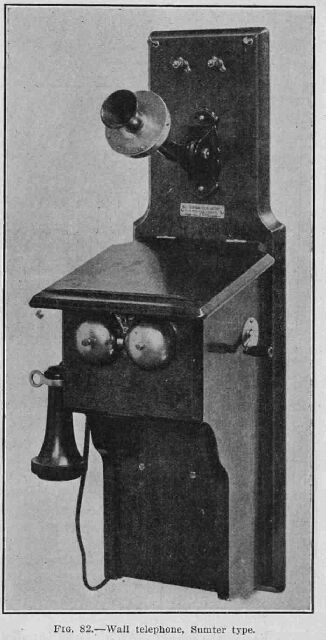


 EE5
in use.
EE5
in use.

